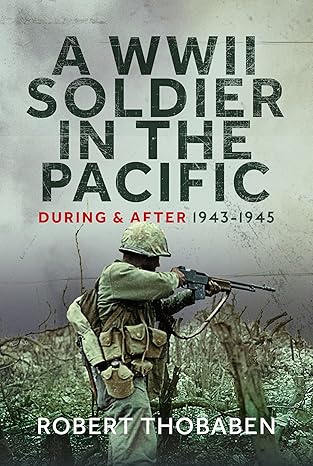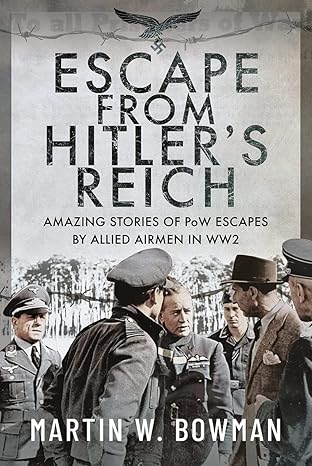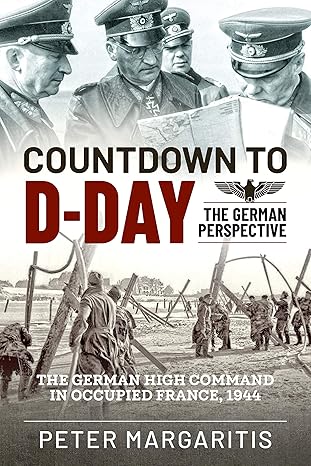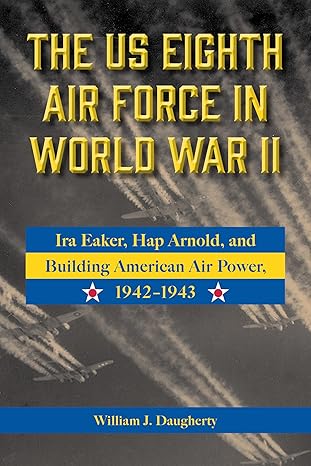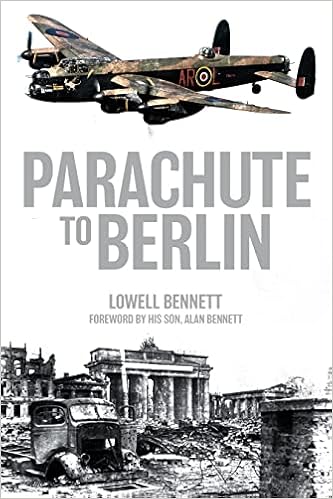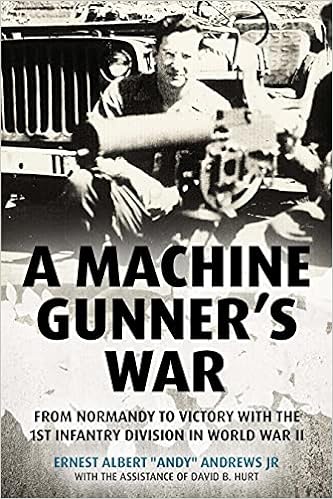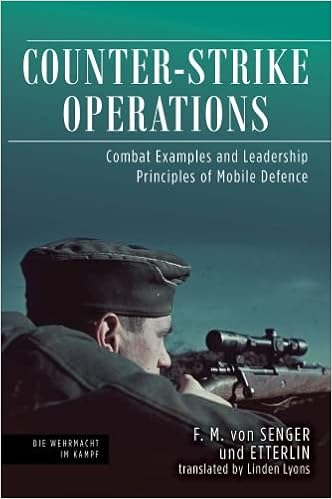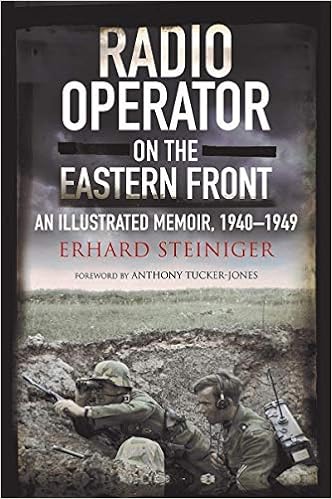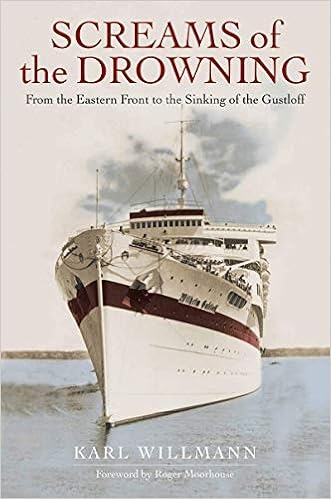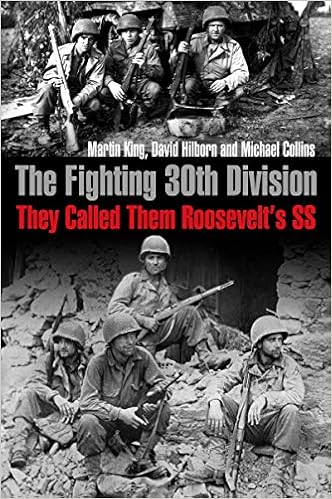Galahad and Chindit: An Overview of the 1944 Burma Campaign
By HD Bedell
The 1944 Burma Campaign is unique in World War II for both its aims and operations and one not frequently seen in popular WWII programming. The tragic drama, from individual survival to international political maneuvering, was played out in the seldom mentioned, but perhaps the most complex, theater of World War II – the China-Burma-India (CBI) Theater.[1]
The United States Army role in the CBI Theater initially was planned as a task force supporting Chinese operations.[2] Committing significant numbers of American forces was considered unnecessary due to China's vast manpower reserves, and, in addition, combat commitments in Europe, North Africa, and the Pacific meant large numbers of American troops simply were not available. The task force units assigned were logistic and training personnel based in India with supplemental liaisons stationed in China. After May 1942, the forces and operations were separated by Japanese-occupied Burma and supplies had to be flown in, first by C-46/47s and later by B-29s, over the Himalayas from India into China, an arduous and dangerous undertaking famously known as flying “Over the Hump.” The operation was inefficient and costly in aircraft and crews: Over 600 planes and crews were lost and it became known as the “Skyway to Hell” or the “Aluminium Trail.”
The CBI Theater command structure was an odious marvel in complexity and, not surprisingly, inept. Chiang Kai-shek, Generalissimo of China, was Supreme Commander China Theater while British General Archibald P. Wavell had an equivalent role in India. Lieutenant General Joseph W. "Vinegar Joe" Stilwell was simultaneously the American Theater Commander and chief of the Generalissimo's Allied Staff for the China Theater.[3] Complications very often were the result of differing strategic views and political hierarchy considerations extant in China.
The soon-to-be elite American Galahad and British Chindit forces wrote tragic and triumphant chapters in military history with their deeds and lives. It is an extraordinary and fascinating instruction in the art, as well as, the vagaries of war taught in the most dire of schools. The operation concepts were significant departures from American and British military doctrines and, ultimately, the prototypes of tactically innovative units that, sadly, were not universally well received. This was especially true of Chindit 77th Brigade under Brigadier Michael Calvert, inserted and supplied by dedicated air units deep in enemy territory, and tasked with long range operations as the primary mission.[4] Galahad and Chindit were the trailblazers of air mobile warfare units.[5]
Despite bold accomplishments in desperate circumstances, the units were abused badly and, in the end, abandoned to ignoble fates. They became ill-fated administrative casualties of "rival theories of warfare"[6] and blatant, crass ingratitude – survivors were scattered as replacements to other, far less illustrious units to be erased by obscurity.
The Fall of Burma: 1942
The Campaign prelude was the 1942 retreat from Burma by American, British and Chinese forces in the face of an efficient and aggressive Japanese invasion. The Japanese desperately needed to control Burma in order to cut off Allied supplies moving over the Burma Road to Chiang Kai-shek's China.[7] The Japanese hoped that without continued American supplies and equipment the Chinese forces would soon collapse allowing the Japanese to consolidate their positions in China, Indo-China, and Malaya. It was not an unreasonable assumption that the Chinese Army would collapse without American support; the Chinese forces were reluctant to fight and Generalissimo Chiang Kai-shek was even more reluctant to commit his forces against the Japanese.[8]
The Japanese 15th Army, commanded by Lieutenant General Shojiro Iida, launched the invasion of Burma from Thailand after its quick surrender on 9 January 1942. The Japanese, following the pattern of their Malaya conquest, concentrated on air power and rapid force movements, quickly capturing the airfields on Rangoon. This was followed by the capture of the airfield at Tennaserim on 15 January 1942. The Allies, virtually without air support from this point onward, could not contain the Japanese advance even after the arrival of Chinese reinforcements (6th Army) commanded by General Stilwell. With the arrival of additional Japanese troops, the Allies had no recourse but to retreat to regroup for the defense of India, the ultimate prize.
The retreat began 25 April 1942. Mandalay was evacuated on 30 April 1942 and Burma was lost completely by mid-May. The British forces under the command of General Harold Alexander barely reached Imphal, just across the Indian border, before the monsoons that would have made force movement nearly impossible. The Chinese 6th Army retreated north into China while Stilwell and his command staff fled overland in a 140 mile march to Imphal.[9]
The retreat was infuriating to Stilwell, more for the cause of it than the act itself. Stilwell believed that command incompetence on the part of the British and the Chinese had caused the collapse of Burma's defense along with nearly 14,000 casualties. After evacuation from Imphal to New Delhi, Stilwell made the following statement to the press in response to questions concerning British statements characterizing the retreat as "a heroic, voluntary withdrawal" and "a glorious retreat:"[10]
"In the first place, no military commander in history ever made a voluntary withdrawal. And there's no such thing as a glorious retreat. All retreats are ignominious as hell. I claim we got a hell of a licking. We got run out of Burma, and it's humiliating as hell. I think we ought to find out what caused it, go back, and retake Burma."[11]
General Stilwell's blunt, though accurate, comment was the result of long months of effort exerted in behalf of a frustrating mission that resulted only in an arduous and dangerous personal retreat replete with severe hardship. These events presaged his employment and treatment of Galahad in his unrelenting commitment to retake Burma and re-establish China's vital overland supply line. Stilwell never forgot the "licking" the Allies received at the hands of the Japanese in 1942.
The First Arakan Campaign
British and Indian troops renewed fighting along the Arakan Peninsula during the winter of 1942-1943 to recoup previous ground losses and establish a re-entry point for counter-offensives into Burma and the rest of Southeast Asia.[12] The first Arakan offensive failed, as did the two subsequent ones. The British and Indian troops simply proved no match for the Japanese who were tactically superior in jungle warfare. The British offensive was further handicapped by a lack of resources and inefficient administration.[13]
The Japanese launched a counterattack after halting the British and inflicted heavy casualties on several British units, sending British forces reeling. Brigades were disintegrated and overrun in fierce fighting and the 6th Brigade headquarters was rushed by Japanese infantry who killed most of the staff and captured the brigadier[14] In the end, the British were driven back to new positions and forced to abandon the offensive. Field Marshal Slim described the situation as follows:
". . .we were back where we started, a sad ending to our first and much heralded offensive. Our actual losses in killed, wounded, and missing were not high, about twenty-five hundred, and, while we had not inflicted so many on the enemy, he had suffered, too. Malaria had taken a heavy toll, far above our battle casualties, and we had lost a good deal of equipment. Neither . . . was as damaging as the loss of morale."[15]
Fortunately for morale, Brigadier Orde Wingate had just returned from his first Chindit raid in Burma, a successful proof-of-concept action that coincided with the Arakan Campaign.
Chindit
Brigadier Orde C. Wingate was an early proponent of guerilla warfare as a necessary component of force structure. Wingate, with his unorthodox operations experience in Palestine and East Africa during the Abyssinian campaign, brought new vitality to Indian Army headquarters in mid-1942.[16] Eccentric, hypnotic, mystic, and abrasive, Wingate had been summoned by Commander-in-Chief Wavell, his former commander in Palestine, to initiate long-range operations behind Japanese lines in Burma. After absorbing the available information on Burma, Wingate formulated his plan for the 77th Brigade Special Long-Range Penetration Group to go into the field the next year after intensive training in guerilla tactics personally supervised by Wingate.
The Brigade was code-named Chindit by Wingate after a Burmese griffin-like beast called a Chinthe to symbolize the ground and air aspects of the operations proposed. Much to the chagrin of the Staff, whom Wingate bypassed by sending the proposal directly to Wavell, the plan was approved and ordered implemented by Wavell as Operation Longcloth. It was an audacious operation that began early in 1943 when Wingate's Chindit crossed into Burma on foot from outposts of the British IV Corps.[17] The force of 3,200 men and 1,100 pack mules was divided into seven columns which functioned as independent guerilla bands. Completely supplied by air drops, they struck at Japanese communications, demolished bridges and supply dumps, and destroyed railways on the upper Irrawaddy River, ranging more than two hundred miles behind Japanese lines.[18]
Initially successful in evading all but minor engagements with the Japanese, who soon began a relentless hunt, the Chindit encountered heavy resistance in mid-March 1943 and sustained nearly 30 per cent casualties. Many of the casualties had to be abandoned in the jungle to certain death by exposure or by torture if captured by the Japanese.[19] Survivors who returned to India were debilitated by disease to the point of being unfit for further service.[20]
The Chindit expedition was touted as a great success in demonstrating that the Japanese were not invincible in the jungle, that British troops, if properly trained, were more than a match for them. It was largely propaganda for the Allies, as well as troops on the Burma front, who needed a victory to sustain them. MIlitarily, the expedition was a failure; little beyond harassment had been accomplished at terrible cost. Field Marshal Slim's comments are representative of Wingate's critics:
"As a military operation the raid had been an expensive failure. It gave little tangible return for the losses it had suffered and the resources it had absorbed. The damage it did . . . was repaired in a few days, the casualties it inflicted were negligible, and it had no effect on Japanese dispositions or plans."[21]
Still, there were many lessons learned that, if heeded, would prove invaluable for future operations. The perceived success of Chindit tactics prompted formation of the Galahad unit in the U.S. Army. Without Galahad and Chindit, it is doubtful that Stilwell would have concluded the 1944 Burma Campaign successfully.
Galahad
On 1 September 1943 General George C. Marshall directed that an American force of 3,000 volunteers with jungle fighting experience be shipped to Southeast Asia to form three long-range penetration groups modeled after Chindit. The project was code-named Galahad.[22]
The unit, assembled in 15 days and containing extraordinary personnel, including Lt. Sam Wilson, who was to receive two silver stars and one bronze star for his gallantry, was designated administratively as the 5307th Composite Unit (Provisional) and shortly thereafter embarked for India. After arriving in Bombay at the end of October 1943, the unit passed to Southeast Asia Command (SEAC), headed by Vice Admiral Lord Louis Mountbatten with Stilwell as Deputy, and began training in Wingate's doctrines. The unit was commanded by administrative default during formation and training by Lieutenant Colonel Charles N. Hunter, who was destined to become the "most unsung hero of the Burma war."[23]
The unit had two months to train and coalesce into a lethalm fighting force. It was organized into three battalions of two combat teams each with 16 officers and 456 enlisted men in each team.[24] The unit was accorded exceptional firepower for its size and 700 pack mules for equipment transport. Like Chindit, they were to be supplied regularly by air drops. They also believed they were to have a three-month mission in the jungle, the limit of endurance declared by Wingate and the War Department as one of the lessons learned by Chindit in 1943. It was not to be.
Galahad originally was assigned to Wingate's command to be integrated fully with Chindit operations. Stilwell, in a state of pique, adamantly pursued the acquisition of Galahad for his own command, insisting that all American Forces in theater should be under his command.
Eventually, Lord Mountbatten, no doubt tired of Stilwell's persistence on the issue, agreed and Galahad passed to Stilwell. Wingate, when informed that Galahad was no longer allotted to him, was quoted by Lt. Col. Hunter: "You can tell General Stilwell that he can take his Americans and . . ."[25] Temporary command passed to Hunter and it was on 4 January 1944 that Brigadier General Frank Merrill was given permanent command of Galahad, which shortly thereafter was dubbed by correspondent James Shepley as Merrill's Marauders. The more appropriate name might have been Hunter's Harriers, since Merrill was incapacitated by two heart attacks and absent during most of The Campaign and the unit was de facto commanded by Hunter in the field.[26]
Merrill was a Major without command experience on Stilwell's staff during the 1942 retreat and barely survived a heart attack during the “Walkout,”raising the question as to whether he was even fit to remain in service. Incredibly, within two years he was not only a Brigadier on his way to Major General, but also had command of the most significant American force in the CBI Theater. Even after Merrill passed from the scene, Hunter was never promoted to official command of the unit he so ably led and was relieved abruptly by Stilwell's order on the day Myitkyina fell.
Still, the stage and its actors were set for the Allied offensive to retake the Burma Road, as well as the complete, collateral disintegration of Galahad and Chindit against a fierce enemy, merciless terrain, cold indifference, the old euphemism of "operational necessity," and outright command blunders.
The Campaign
The Campaign was actually several campaigns spread widely over northern and southern Burma. In the north, the Chinese 22nd and 38th Divisions, commanded by Stilwell, moved south along the Ledo Road into the Hukwang Valley in December to reopen the Burma Road and take Myitkyina airfield. In the south, Mountbatten ordered a new offensive into Arakan in mid-January 1944 by Slim's 14th Army. In February and March, Galahad and Chindit moved into Burma, Galahad to flank the Japanese for Stilwell's Chinese Army, and Chindit to cut the communication and supply routes of the Japanese 18th Division facing Stilwell.
Stilwell's ultimate aim in The Campaign, and necessity, was to secure the Myitkyina airfield. Without the airfield in Allied hands, retaking the Burma Road would avail little. The Japanese would still be able to disrupt the supply route and bring in reinforcements by air.
By taking Myitkyina, it would be possible for the 22nd and 38th Divisions to link with the Chinese Divisions in Yunnan.[27] However, Myitkyina was a long way from the Ledo Road and there were 60,000 battle-hardened Japanese troops in Burma to oppose the Allies. Stilwell was painfully aware of the facts.
Galahad arrived at Ledo at the end of January and planned to jump off 15 February. Stilwell, with characteristic rancor, noted in his diary: "My God what speed."[28] The actual order to move came on 22 February and Galahad set out at 0600 on 24 February 1944 to set a roadblock on the Kamaing Road south of Walawbum where the Japanese 18th Division's headquarters was thought to be.
The order was modified on 28 February 1944 to set the roadblock at Walawbum leading to Galahad's first major engagement with the enemy. Unfortunately for Galahad, General Tanaka, commander of the 18th division, decided he could delay the slow-moving, hesitant Chinese 22nd and 38th with a small rear guard and throw his main strength against the Americans.[29]
This was not the only time laggard Chinese movements cost the Americans. Chinese movements cost the Allies several potential victories by allowing outnumbered and outgunned Japanese forces to escape. This reluctance was best typified by the Allied slogan regarding the Chinese 113th Regiment in The Campaign: "always the last to a fight and the first to a feast."[30]
Galahad occupied positions at Wesu Ga, Lagang Ga, and Walawbum on 3 March. Japanese attacks began on 4 March at Lagang Ga, site of the air drop field. Galahad opened fire on Walawbum with mortars and received 75mm fire in return; an engagement was under way at Wesu Ga as well. The Japanese incurred heavy casualties during several frontal assaults and were forced to withdraw 5-6 March 1944. On 7 March 1944 Merrill, after the arrival of the Chinese 113th Regiment, gave the order for Galahad to withdraw and move south. This was to be the pattern of Galahad engagements. Galahad would act as a spearhead for the Chinese and the Chinese would move up to relieve and occupy the positions won by Galahad. This was a bitter complaint later voiced by Hunter. Galahad was not intended to act as a spearhead unit for the Chinese.[31]
Galahad's second mission replicated the first. The unit was to cut supply and communication lines along the Kamaing Road at Shaduzup and Inkangatawng. The terrain in which most of the fighting occurred was the most difficult yet encountered and tortuous to traverse. The Japanese again threw their main strength at Galahad and again suffered significant losses. Galahad also suffered and by 22 April, when Galahad was ordered to Myitkyina, "the fighting edge of the most mobile and most obedient force that Stilwell had was worn dull. From this were to flow consequences of great magnitude."[32]
The march into the Moguang Valley to Myitkyina over the Kumon Range further depleted Galahad; as an example, only 12 men remained in the 2nd Battalion.[33] By the time Galahad reached Myitkyina, the unit had been in combat for nearly three months and on the move for four months. The three month limit set by Wingate and the War Department was ignored by Stilwell's plan to have Galahad strike directly at Myitkyina with two Chinese regiments. The Chinese performance had much improved by this time but even so the strength of Galahad was gone. American reinforcements of any man who could walk and hold a rifle, including some of Galahad's own debilitated evacuees at the orders of Stilwell's staff, were sent to Myitkyina.
The airfield was captured and air operations began almost immediately. However, the Japanese stubbornly refused to surrender the town. When Myitkyina finally fell on 3 August 1944, two days after Stilwell was promoted to four stars, Colonel Hunter was there with the victorious, pathetic remnants of Galahad. Hunter also was relieved of his post on that day and returned to the United States by ship. It was the end of The Campaign for Galahad.
Chindit Operations in The Campaign
Chindit operations in 1944 were on a much larger scale than their previous raid and Galahad operations combined, and would require volumes to recount not only the tactical significance, but also the many tales of individual gallantry. The "raid" of 1944 consisted of six brigades with nearly 20,000 men and close air support provided by a specially created unit of the United States Army Air Force known as Air Commando One under command of Colonel Philip Cochran. One essential item included in the outfitting of Air Commando One was the provision of sufficient light aircraft capable of landing in small jungle clearings to evacuate the sick and wounded – no one would be left behind to die in this operation.[34]
Chindit moved into Burma on the night of 5 March 1944 in an airborne assault known as Operation Thursday. Nearly half of the Chindit force was to be transported by gliders into three clandestinely prepared landing sites behind Japanese lines. The landing areas were designated Piccadilly, Broadway, and Chowringhee. Piccadilly proved unusable at the last minute and the first flights were diverted to Broadway. The landing at Broadway was successful and Chowringhee followed, although Chowringhee was abandoned after three days to avoid a correctly anticipated Japanese attack.
When the first phase of Operation Thursday was complete, 9,000 troops, 1,300 pack animals, and 500,000 pounds of weapons and stores were in place well behind enemy lines.[35] Wingate had not envisioned that the landing sites would be simply points of debarkation for guerilla operations. They were planned as strongholds to be held. Broadway was turned into a busy airfield complete with artillery, American and British fighter aircraft, C-47 transports, and fortifications.
The 77th Brigade under Calvert left Broadway on 8 March 1944 and marched into Indaw Valley to cut communications and establish another stronghold for the Japanese to throw themselves against, diverting forces that could have been used against Stilwell as well as inflicting heavy casualties and severely depressing Japanese morale. It was not without cost – of the three Victoria Crosses awarded to Chindit officers, all were posthumous. Only one Victoria Cross was awarded to a Chindit survivor.
Calvert and the 77th engaged the Japanese near Hensu in a savage hand-to-hand action that won Chindit another stronghold known as White City. An airstrip quickly was carved out of the jungle and Air Commando One began supply and evacuation flights. Another stronghold known as Aberdeen was established to the southwest. Still another, Blackpool, was established to the north.[36] Wingate's plan was working well; he had five brigades deep in central Burma, well-supplied, and with sufficient air cover.[37] Wingate did not live to see the rewards of his efforts; he was killed in an aircraft crash on 24 March 1944.
Wingate was succeeded in command by Maj. General W. D. A. Letaigne, commander of the Chindit 111th Brigade. Letaigne inherited a complicated force diversely deployed and heavily occupied in several areas. The real complication, however, was to be with Stilwell and the drive to take Myitkyina. Stilwell demanded more than was possible and was ungrateful for any of the superhuman efforts Chindit expended. Chindit and Galahad were becoming depleted rapidly.[38]
Blackpool was the scene of fierce engagements with the Japanese and Chindit was forced to withdraw on 25 May 1944, a move that infuriated Stilwell as a move that jeopardized his Myitkyina plans. A crisis was precipitated that enveloped the highest SEAC officers and Stilwell. From this point on, Stilwell and the Chindit were in a constant state of invective.
In June, Stilwell, who now had operational control of the 3rd India Division, ordered the 77th Brigade into the Mogaung Valley. Chindit already was beyond operational limits and had lost a great deal of its edge. Nevertheless, Calvert and the 77th attacked Mogaung with a dash and gallantry that impressed American observers.[39] However, the 77th lacked the resources to carry the engagement in one rush.
The Chinese 114th Regiment, 38th Division joined the fight and the town fell on 26 June 1944 marking nearly four months of tough jungle fighting by Chindit. Calvert insisted that the 77th be evacuated and after receiving no reply, ordered the evacuation himself. Letaigne backed his actions to Stilwell as necessary to preserve his troops.[40] Stilwell then turned his fury and demands upon Galahad. Chindit was gone and in February 1945 ceased to exist.[41]
Final Note
Galahad and Chindit influenced The Campaign beyond what was accorded to them by their contemporaries and their theater commanders, particularly Stilwell. Galahad's treatment was indicted by Colonel Hunter and the Inspector General conducted an investigation into the matter. As a result six more Distinguished Service Crosses were awarded and the 5307th received the Distinguished Unit Citation. It also must be remembered that while Galahad and Chindit were operating in north and central Burma, the Japanese attack on Imphal and Kohima was engaging Slim's 14th Army heavily – the entire theater was engulfed in fierce fighting.
| * * * |
Show Notes
Footnotes
[1]. Charles F. Romanus and Riley Sunderland, United States Army in World War II. China-Burma-India Theater. Stilwell's Mission to China. (Washington, DC: Office of the Chief of Military History, Department of the Army, 1953) 86-117.
[2]. Romanus and Sunderland, United States Army in World War II. China-Burma-India Theater. Stilwell's Mission to China xi.
[3]. Romanus and Sunderland, United States Army in World War II. China-Burma-India Theater. Stilwell's Mission to China xi.
[4]. Shelford Bidwell, The Chindit War. Stilwell, Wingate, and The Campaign in Burma: 1944 (New York: Macmillan Publishing Co., Inc., 1980) 59.
[5]. Bidwell 283.
[6]. Bidwell 283.
[7]. Louis L. Snyder, Historical Guide to World War II. (Westport, CT: Greenwood Press, 1982) 114.
[8]. See The Stilwell Papers, ed. Theodore H. White for General Stilwell's personal account of his command difficulties in the form of diary excerpts.
[9]. See The Stilwell Papers, ed. Theodore H. White.
[10]. Frank Dorn, Walkout with Stilwell in Burma (New York: Thomas Y. Crowell Company, 1971) 242.
[11]. Dorn, 243.
[12]. Snyder, 116.
[13]. Field Marshal the Viscount Sir William J. Slim, Defeat into Victory (New York: David McKay Company, Inc., 1961) 121-139.
[14]. Slim, 129.
[15]. Slim, 133.
[16]. Bidwell, 39.
[17]. Ian Fellowes-Gordon, The Magic War. The Battle for North Burma (New York: Charles Scribner's Sons, 1971) 44.
[18]. Snyder, 135-136.
[19]. Philip Warner, The Secret Forces of World War II (London: Granada Publishing Limited, 1985) 57.
[20]. See John Masters, The Road Past Mandalay, (New York: Bantam,1963), for a detailed account of Blackpool.
[21]. Slim, 134.
[22]. Charles F. Romanus and Riley Sunderland, United States Army in World War II. China-Burma-India Theater. Stilwell's Command Problems. (Washington, DC: Office of the Chief of Military History, Department of the Army, 1956) 34.
[23]. Fellowes-Gordon, 32.
[24]. Romanus and Sunderland, United States Army in World War II. China-Burma-India Theater. Stilwell's Command Problems 35.
[25]. Charlton Ogburn, Jr., The Marauders (New York: Harper and Brothers, 1956) 60.
[26]. Fellowes-Gordon 35.
[27]. Joseph W. Stilwell, The Stilwell Papers, ed. Theodore H. White (New York: William Sloan Associates, Inc., 1948) 269.
[28]. Stilwell 276.
[29]. Romanus and Sunderland, United States Army in World War II. China-Burma-India Theater. Stilwell's Command Problems 150.
[30]. Bidwell 93.
[31]. Ogburn 256-257.
[32]. Romanus and Sunderland, United States Army in World War II. China-Burma-India Theater. Stilwell's Command Problems 191.
[33]. Romanus and Sunderland, United States Army in World War II. China-Burma-India Theater. Stilwell's Command Problems 237.
[34]. Warner 57.
[35]. Bidwell 110.
[36]. Fellowes-Gordon 112-113.
[37]. Romanus and Sunderland, United States Army in World War II. China-Burma-India Theater. Stilwell's Command Problems 198.
[38]. Warner 59.
[39]. Romanus and Sunderland, United States Army in World War II. China-Burma-India Theater. Stilwell's Command Problems 221.
[40]. Romanus and Sunderland, United States Army in World War II. China-Burma-India Theater. Stilwell's Command Problems 221.
[41]. Bidwell 285.
Bibliography
Charlton Ogburn, Jr., The Marauders (New York: Harper and Brothers, 1956) 60.
China-Burma-India Theater. Stilwell's Command Problems . (Washington, DC: Office of the Chief of Military History, Department of the Army, 1956).
Field Marshal the Viscount Sir William J. Slim, Defeat into Victory (New York: David McKay Company, Inc., 1961).
Frank Dorn, Walkout with Stilwell in Burma (New York: Thomas Y. Crowell Company, 1971).
Ian Fellowes-Gordon, The Magic War. The Battle for North Burma (New York: Charles Scribner's Sons, 1971).
John Masters, The Road Past Mandalay, (New York: Bantam,1963).
Joseph W. Stilwell, The Stilwell Papers, ed. Theodore H. White (New York: William Sloan Associates, Inc., 1948) 269.
Leonard Mosley, Gideon Goes to War : The Story of Major-General Orde C. Wingate (New York: Charles Scribner’s Sons, 1955)
Louis L. Snyder, Historical Guide to World War II. (Westport, CT: Greenwood Press, 1982) 114.
Philip Warner, The Secret Forces of World War II (London: Granada Publishing Limited, 1985).
Romanus and Sunderland, United States Army in World War II. China-Burma-India Theater: Stillwell’s Mission to China.
Shelford Bidwell, The Chindit War. Stilwell, Wingate, and The Campaign in Burma: 1944 (New York: Macmillan Publishing Co., Inc., 1980).
| * * * |
© 2026 HD Bedell
Published online: 01/01/2023.
Written by HD Bedell.
About the author:
HD Bedell has a B.A. in Writing/English from Missouri State University and an M.S. from the Center for Defense and Strategic Studies.He served as a USN Surface Warfare Officer with assignments in engineering and operations before injuries forced his medical discharge. After naval service, he worked as a software documentation editor and writer in defense industries. He later held related academic posts. Currently, he lives in Apollo Beach, Florida.
* Views expressed by contributors are their own and do not necessarily represent those of MilitaryHistoryOnline.com.

